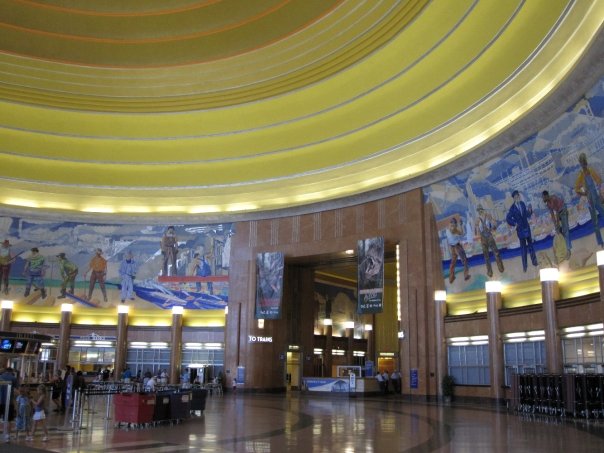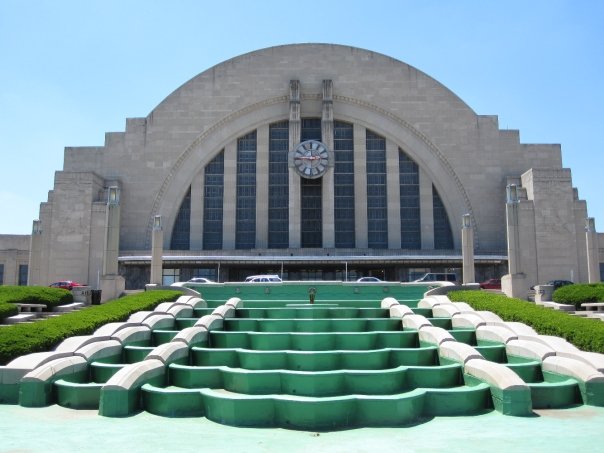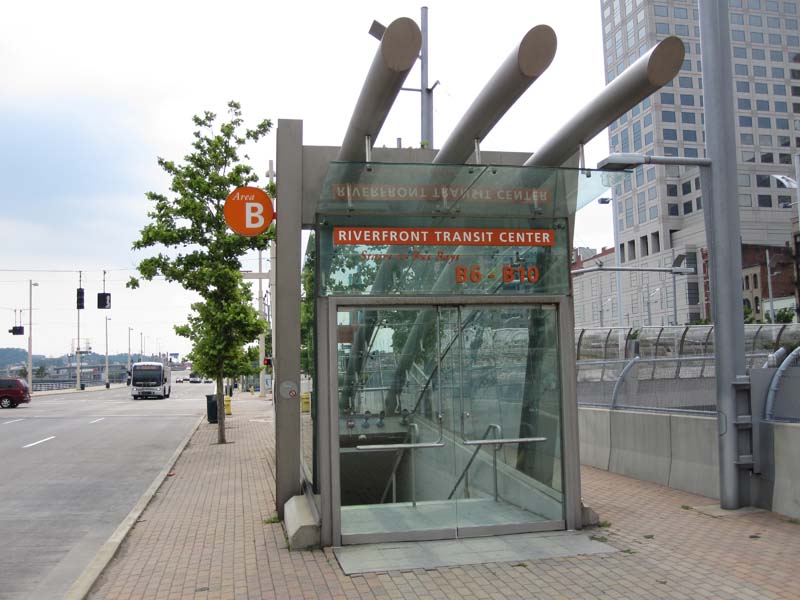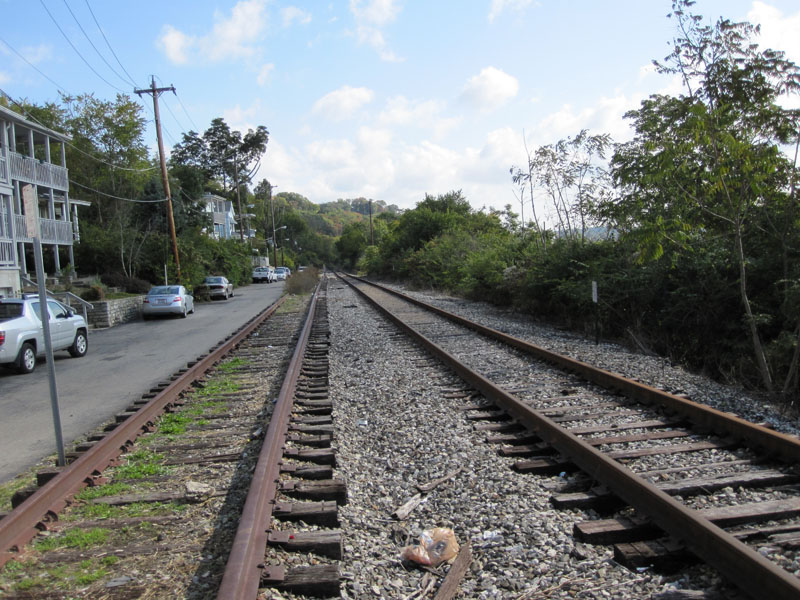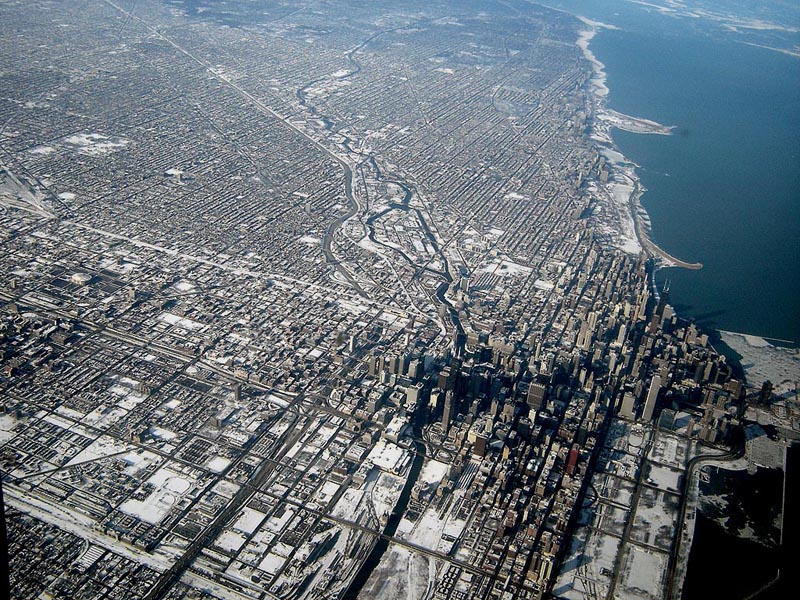 I am a native of the Greater Cincinnati area, but I have spent the better part of my adult life living and working in Chicago. I left Chicago in 2007 for greener pastures in New York City, and then ultimately found my way back home to Cincinnati earlier this year. However, I still look back on my time in Chicago as having an enormous impact on my thoughts about urban planning and design, architecture, and mass transit.
I am a native of the Greater Cincinnati area, but I have spent the better part of my adult life living and working in Chicago. I left Chicago in 2007 for greener pastures in New York City, and then ultimately found my way back home to Cincinnati earlier this year. However, I still look back on my time in Chicago as having an enormous impact on my thoughts about urban planning and design, architecture, and mass transit.
In June of this year, and after a long absence, I spent my first weekend in Chicago since becoming involved in discussions about Cincinnati’s ongoing urban renaissance. Once I arrived in town, I could not help but look at my old stomping grounds in a whole new light, and see Chicago’s urban development through the eyes of a born-again Cincinnatian. Over the course of a few days, I was able to explore a few key differences between the two cities, and perhaps come home with a few insights that can be applied to Cincinnati.
Urban Form:
The first and most obvious difference between Cincinnati and Chicago is one of sheer scale. While driving through Indiana on the way to Chicago from Cincinnati, the transition from rural cornfields to suburban sprawl (and its inevitable traffic jams) began while I was still a good 40 miles away from the Chicago Loop. Here in Cincinnati, 40 miles in any direction from Fountain Square would be considered far into the hinterland. Indeed, it is possible to find oneself in a relatively rural area in less than five miles from downtown Cincinnati, depending on the direction of travel.
Topography plays a large role, of course: the Cincinnati area’s steep hills prevent large-scale development in many areas, while the vast plains surrounding Chicago offer no such limitations. I see this as an advantage in Cincinnati’s favor: In addition to providing unique vistas and hillside neighborhoods that Chicagoans could only dream about, Cincinnati’s geographic setting allows for an easy escape to the country without having to drive through 40 miles of strip malls and traffic congestion (assuming one isn’t trying to escape via I-75 or I-71).
Chicago’s scale is apparent when flying into either of the city’s two airports, especially at night. Chicago’s relentless street grid stretches from horizon to horizon, with the radial streets and freeways all leading to the mountain of skyscrapers downtown. The city’s magnificent lakefront parks form an elegant transition from dense urban neighborhoods to the empty expanse of Lake Michigan. The entire city — so orderly and logical from above, like a circuit board — has the appearance of a vast machine. Down on the surface, though, the machine-like efficiency of the street grid leaves little room for quirks and eccentricities such as Cincinnati’s Mt. Lookout Square or O’Bryonville.
Commercial Districts:
Aaron Renn recently wrote a thought-provoking article about how cities treat their ordinary spaces versus their special spaces, and I believe Cincinnati has the edge in this regard. We don’t have the “special spaces” that Chicago has, such as a Magnificent Mile or a Grant Park (although that is changing for the better as Cincinnati develops its riverfront), but we have a vast number of unique “ordinary spaces” that each have their own character. For example, Chicago’s neighborhood business districts tend to be linear corridors along straight commercial streets, with relatively little distinction from each other. Aside from the makeup of the retail establishments, the urban space of Broadway in Lakeview isn’t much different from that of Milwaukee Avenue in Wicker Park or of Lawrence Avenue in Albany Park. Here in Cincinnati, even if you disregard the types of businesses that occupy the storefronts, there is a real difference between neighborhood business districts such as Ludlow Avenue, Hyde Park Square, and Over-the-Rhine.
Speaking of Over-the-Rhine, there is simply nothing like it in Chicago, as OTR was a bustling urban neighborhood when Chicago was still a remote trading post. Chicago’s present form didn’t come into being until after the Great Chicago Fire, by which time many buildings in Over-the-Rhine were already a generation old. For an urban neighborhood that comes close to resembling Over-the-Rhine, one must look east to New York or Philadelphia rather than west to Chicago.
Residential Neighborhoods:
If Chicago’s commercial avenues are rather drab, that city’s residential side streets offer many lessons for Cincinnati. Upon taking a turn down a leafy side street in Chicago, a pedestrian immediately enters a lush, green world where the noise of the city fades away and the harshness of the sunlight is filtered out by a dense canopy of trees, usually flanked by ornate row houses, bungalows, or apartment buildings. The importance of greenery cannot be understated, and as Over-the-Rhine continues its rejuvenation, Chicago shows that when it comes to street trees, there’s really no such thing as too many. It’s no coincidence that OTR’s Orchard Street — arguably the greenest street in the neighborhood — is also one of the most sought-after streets for renters and homebuyers.
Cincinnati’s dominant grocery store chain could also learn a thing or two from Chicago’s two largest chains on how to design and operate “big box” grocery stores that add life to urban business districts, rather than suck life from them. Throughout Chicago’s denser neighborhoods, Dominick’s (a division of Safeway) and Jewel (a division of Albertson’s) are building stores that place the main entrance at the corner of the building, facing a busy intersection, rather than behind an ocean of parking. In many cases, the stores are multi-story affairs with residential or commercial space above, and parking in a garage tucked around the corner.

One of the first such stores is a Dominick’s location at the corner of Fullerton and Sheffield, adjacent to a CTA rapid transit station and DePaul University. The ground floor of the store contains a deli, butcher and seafood department, florist, bakery, a Starbucks, and the checkout lanes, while the second floor contains aisles of groceries and general merchandise. Large-capacity elevators allow customers to transport strollers and shopping carts between the floors.
Up in my old neighborhood of Edgewater, a Dominick’s store at the corner of Foster and Sheridan — an older suburban-style store not unlike the Kroger store in Corryville — is being replaced with a modern store that respects the neighborhood rather than turning its back on it. If Kroger’s two largest national competitors, Safeway and Albertson’s, are tripping over each other to build urban-scaled grocery stores in dense neighborhoods, then Kroger’s claim that there is no market for such stores would seem to ring hollow.
Public Transit:
Another key difference between Cincinnati and Chicago that cannot be ignored is public transit. While Chicago’s system of public transit is not perfect by any stretch, Chicago has a culture in which taking a train to work or for shopping is simply accepted as a routine fact of life for most people, rather than as something that is done only because one has no other choice. There is no stigma, and a wide variety of demographic groups can be found represented on the city’s buses and trains on any given day. Regrettably, only a handful of American cities have achieved this, and Cincinnati is not yet one of them. To its credit, the Chicago Transit Authority has recently completed an ambitious upgrade of many stations on the city’s north side and west side, with further upgrades elsewhere in the city underway.

Finally, and perhaps most importantly, is the difference in general attitude between the two cities. Chicago has a certain swagger that Cincinnati lacks, a confidence among the populace that the city is capable of doing great things and attracting great people. This is a double-edged sword, in that Chicago’s reputation of being “the city that works” involves a strong-man mayor who has almost unlimited powers, who can easily crush any community opposition to his plans.
Indeed, while certain Chicago neighborhoods are high-priced hotbeds for economic development, vast parts of the city continue to look as if they were imported from Detroit. There is also the corruption: In Cincinnati, it would be almost unthinkable for a City Council member or department head to be hauled away in handcuffs by the FBI and indicted on federal corruption charges. In Chicago, such occurrences happen often enough that they barely even make the local news.
Cincinnati, on the other hand, has a long-standing inferiority complex that has proven difficult to shake. But as major projects such as the streetcar, The Banks, and Central Riverfront Park are completed, perhaps Cincinnati will adopt a unique swagger of its own, while avoiding some of the pitfalls of our younger and larger neighbor to the north.








